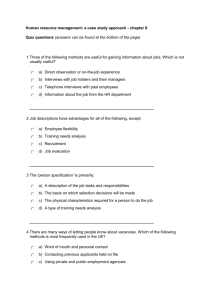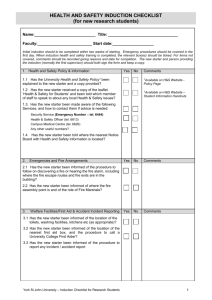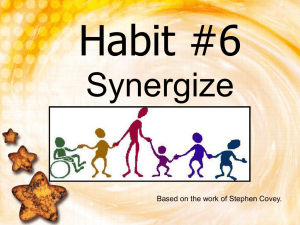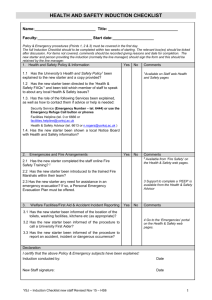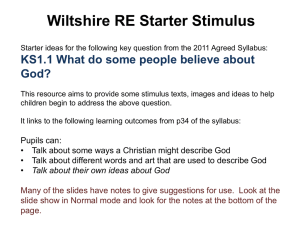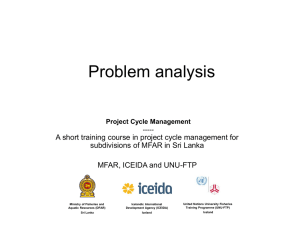health and safety induction checklist
advertisement
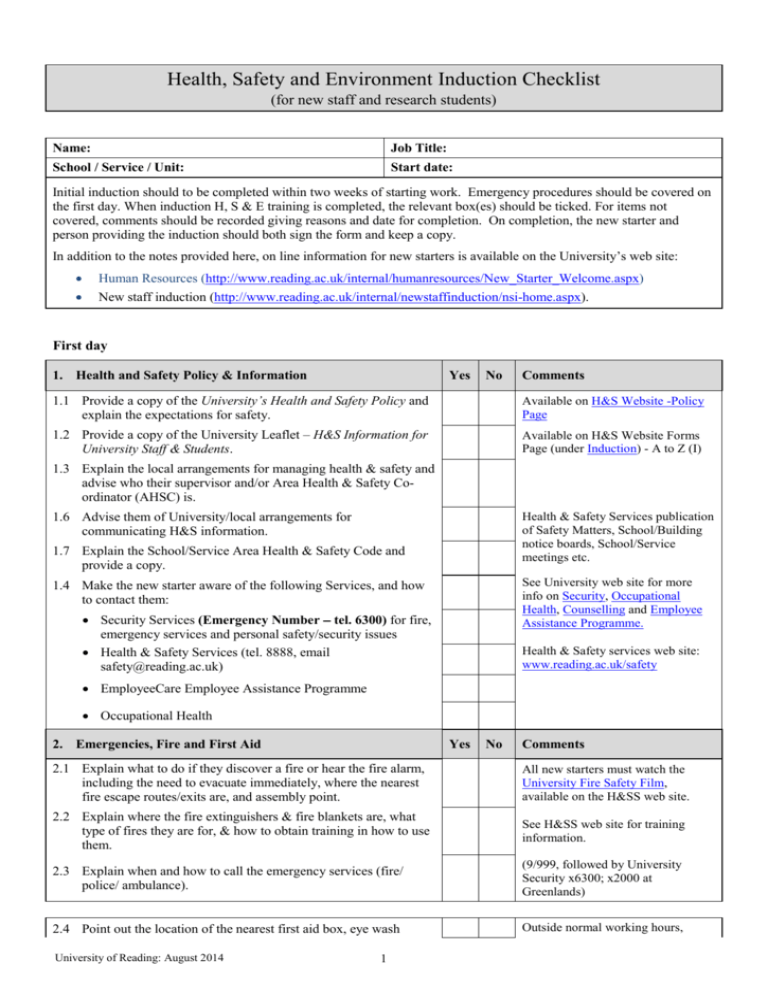
Health, Safety and Environment Induction Checklist (for new staff and research students) Name: Job Title: School / Service / Unit: Start date: Initial induction should to be completed within two weeks of starting work. Emergency procedures should be covered on the first day. When induction H, S & E training is completed, the relevant box(es) should be ticked. For items not covered, comments should be recorded giving reasons and date for completion. On completion, the new starter and person providing the induction should both sign the form and keep a copy. In addition to the notes provided here, on line information for new starters is available on the University’s web site: Human Resources (http://www.reading.ac.uk/internal/humanresources/New_Starter_Welcome.aspx) New staff induction (http://www.reading.ac.uk/internal/newstaffinduction/nsi-home.aspx). First day 1. Health and Safety Policy & Information Yes No Comments 1.1 Provide a copy of the University’s Health and Safety Policy and explain the expectations for safety. Available on H&S Website -Policy Page 1.2 Provide a copy of the University Leaflet – H&S Information for University Staff & Students. Available on H&S Website Forms Page (under Induction) - A to Z (I) 1.3 Explain the local arrangements for managing health & safety and advise who their supervisor and/or Area Health & Safety Coordinator (AHSC) is. Health & Safety Services publication of Safety Matters, School/Building notice boards, School/Service meetings etc. 1.6 Advise them of University/local arrangements for communicating H&S information. 1.7 Explain the School/Service Area Health & Safety Code and provide a copy. See University web site for more info on Security, Occupational Health, Counselling and Employee Assistance Programme. 1.4 Make the new starter aware of the following Services, and how to contact them: Security Services (Emergency Number tel. 6300) for fire, emergency services and personal safety/security issues Health & Safety Services (tel. 8888, email safety@reading.ac.uk) Health & Safety services web site: www.reading.ac.uk/safety EmployeeCare Employee Assistance Programme Occupational Health 2. Emergencies, Fire and First Aid Yes No Comments 2.1 Explain what to do if they discover a fire or hear the fire alarm, including the need to evacuate immediately, where the nearest fire escape routes/exits are, and assembly point. All new starters must watch the University Fire Safety Film, available on the H&SS web site. 2.2 Explain where the fire extinguishers & fire blankets are, what type of fires they are for, & how to obtain training in how to use them. See H&SS web site for training information. 2.3 Explain when and how to call the emergency services (fire/ police/ ambulance). (9/999, followed by University Security x6300; x2000 at Greenlands) 2.4 Point out the location of the nearest first aid box, eye wash Outside normal working hours, University of Reading: August 2014 1 contact Security on x6300 for first aid. station, first aid room &/or emergency showers (if appropriate) and how to contact local first-aiders and Security. 2.5 Explain any special or additional emergency procedures that apply. e.g. Response to spillages of hazardous materials in labs; special alarms. 2.6 Explain how to obtain non-emergency medical advice. Phone 9/111 for non-emergency medical advice from the NHS helpline. 2.7 If new starter has a disability, is a Personal Emergency Evacuation Plan (PEEP) required? If Yes, please confirm one has been agreed. See Safety Note 28. 3. Welfare Facilities Yes No Comments Yes No Comments 3.1 Point out the location of the toilets, washing facilities, kitchen & rest areas, lockers etc (as appropriate). First week 4. Accidents and Hazard Reporting 4.1 Explain the incident / accident reporting procedure (accidents/incidents/near misses). Use the H&S on-line form, available on the H&SS web site. 4.2 Explain how to report building faults/roads/paths/lighting etc. Report building/campus hazards to the E&F Helpdesk, Extn 7000. 5. Workplace health and safety Yes No Comments 5.1 Advise that work that could disturb the fabric of the building must not be undertaken, unless authorised by E&F, due to the potential risk of disturbing asbestos and/or building services. An ‘Authorisation to Work’ form must be submitted to the E&F Help Desk. 5.2 Discuss the following issues with the new starter, where these are appropriate to their work: Refer to Area H&S Code and any Local Rules. General workplace, workshop or laboratory health & safety (housekeeping, safe storage, local rules; lone working etc). Electrical safety, including pre-use checks of portable appliances, use of electrical heaters etc. If necessary, portable oil filled heaters are available on loan from E&F. Other types e.g. convector, fan or radiant bar are NOT permitted. Travel on University business, including driving safety & the need to have insurance for driving on business. See University Driving for work policy on H&SS web site. Safe use of campus roads and foothpaths by pedestrians, cyclists and drivers. See the University Code of Behaviour. Be aware of others, watch your speed, be considerate & share the space). It is good practice to inform Security if you are working late at night or at weekends, so that they know the building is occupied in the event of a fire alarm. Sleeping overnight in academic buildings is NOT permitted. 5.3 Explain the local / University arrangements for working outside normal working hours. Include: work activities they are not permitted to undertake; equipment they are/are not authorised to use; substances they must not handle; any restricted locations; any signing-in/out system. 6. Environmental impacts Yes 6.1. Explain the University’s environmental policy and provide a copy. University of Reading: August 2014 2 No Comments Available on Clean & Green web site. www.reading.ac.uk/cleanandgreen 6.2. Explain the waste disposal and recycling routes for the types of waste generated. Ensure that waste disposal routes for hazardous substances e.g. in labs, are clear. 6.3. Discuss your School/Department’s five top impacts on the environment, e.g. paper, lighting, travel, use of portable electrical appliances, including computers & heaters. Switch off appliances, monitors lights when not in use, avoid printing unless necessary, use double-sided printing if possible. 6.4. Advise to check travel section of Clean & Green website for: Reading Bus passes and Bus + salary sacrifice scheme University car club and Car Sharing schemes Readybike See Clean & Green website for more information. Accessible from the Clean and Green Home page 6.5.Complete the on-line Environmental E-learning course. Before starting specific work activities 7. Risk assessments and Safe Systems of Work Yes No Comments DSE = Display Screen Equipment (computer work) DSE leaflet available from Health & Safety Services or the H&SS website A to Z (DSE). 6.1 If the work of the new starter involves a significant amount of DSE use, provide a DSE leaflet , notify the local DSE assessor of the new starter and check that the new starter completes the DSEasy on-line training module and assessment. DSE assessor to follow up on any issues reported via DSEasy. e.g. Biological agents; hazardous substances (COSHH); radiation; noise; cryogenics; work at height; lasers. 6.2 Explain the need for risk assessments, safe systems of work or Standard Operating Procedures, including those specific to the work of the new starter. It is important that the new starter understands what they need to do to work safely. This may require specific instruction and training at a later date – if so, please complete Section 9 below. 6.3 Safe lifting techniques Refer to H&SS leaflet ‘Good manual handling practice’. 6.4 Safe use & maintenance of machinery and equipment, including safety features and how to use them. See relevant Safety Codes of Practice on H&SS web site for e.g. fume cupboards, workshop machinery. See OH website for more guidance. 6.5 Health surveillance (where required e.g. for potential exposure to hazardous substances, noise, hand arm vibration etc.) or health clearance. 8. Personal Protective Equipment Yes 7.1 Explain if personal protective equipment (PPE) or other safety equipment is required and why it must be used. 7.2 Issue any necessary PPE, explain its proper use, storage, maintenance & how to report defects/ obtain replacements. 9. Training University of Reading: August 2014 3 No Comments 9.1 List here any health, safety or environmental training needs identified (including timescales for attendance) or use the Training Needs/Matrix template: NB Details of H&S training courses are on the Training Page of the H&SS website. Date completed: i. ii. 10. Identify here any other information requirements, or any other comments. Declaration I certify that the above health, safety & environmental induction subjects have been explained: Induction conducted by: (please include job title) Date: Employee / student signature: Date: University of Reading: August 2014 4
